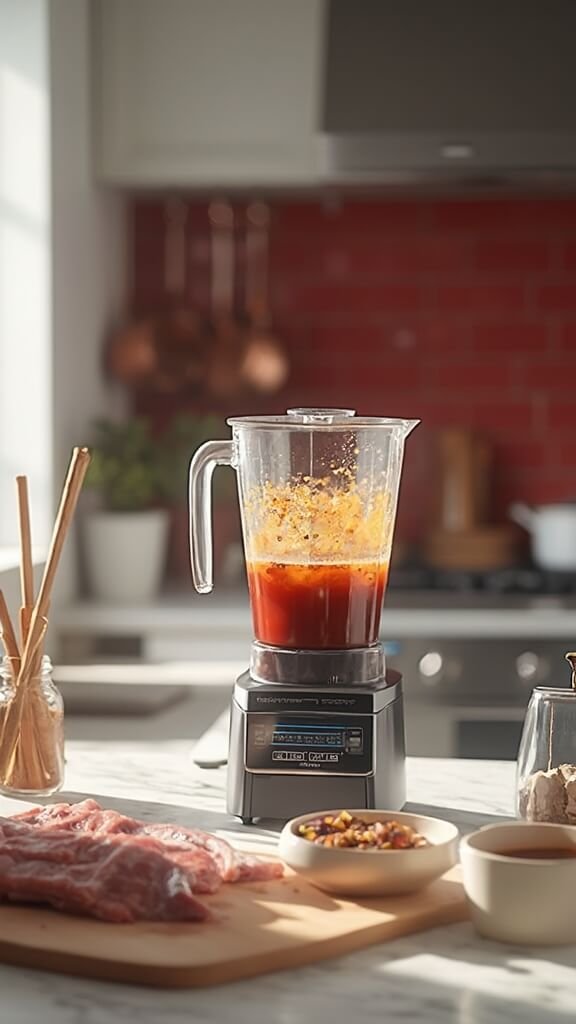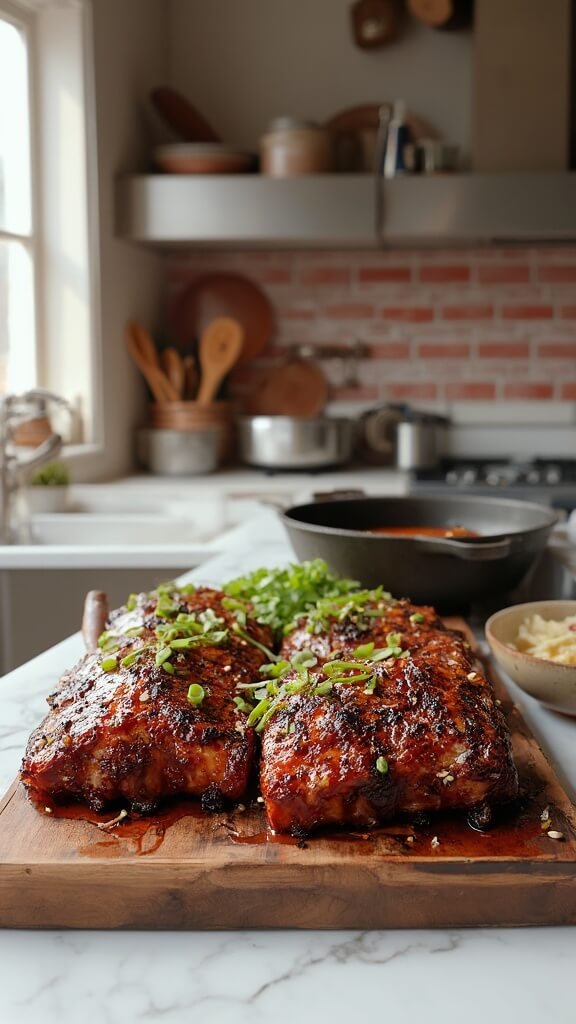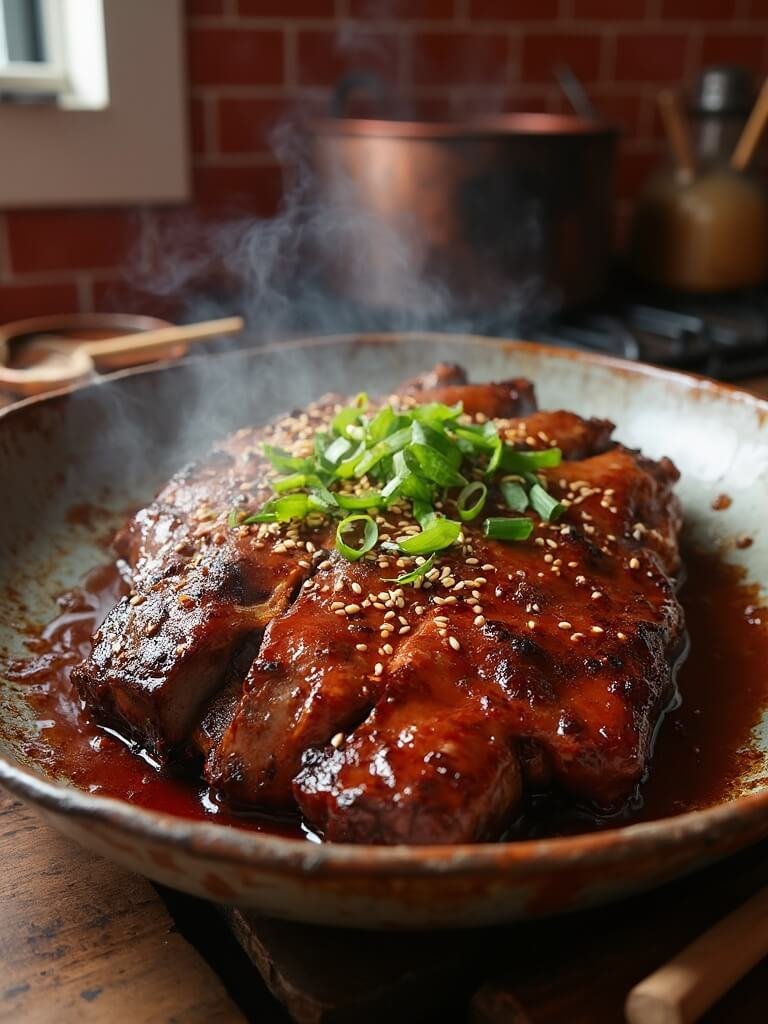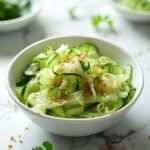Quick Sugar-Free Spicy Korean BBQ Ribs That Actually Taste Amazing
Ever craved those sticky, spicy Korean BBQ ribs but worried about the sugar crash afterward?
I get it.
The traditional galbi is loaded with brown sugar and corn syrup.
But here’s what I’ve discovered after months of testing – you can create that same caramelized, finger-licking magic without a single grain of sugar.

KEY INFO
- Prep time: 15 minutes
- Marinating time: 4-24 hours (overnight preferred)
- Cook time: 15-45 minutes (depending on method)
- Total time: 4.5-25 hours
- Servings: 4-6 people
- Difficulty: Moderate
- Dietary tags: Keto, sugar-free, low-carb, gluten-free option, dairy-free
EQUIPMENT NEEDED
- Large zip-top bag or container for marinating
- Grill, grill pan, or heavy skillet
- Blender or food processor
- Tongs
- Sharp knife and cutting board
No grill? No problem – your broiler or even a cast-iron skillet works brilliantly.
INGREDIENTS
Main Event:
- 3-4 lbs beef short ribs (flanken-cut preferred) or boneless pork ribs
[Chicken thighs work too if you’re on a budget]
The Magic Marinade:
- 1 cup soy sauce (or coconut aminos for gluten-free)
- 1 cup erythritol or monk fruit sweetener
[Start with ¾ cup – you can always add more] - ¼ cup rice vinegar
- 3 tbsp toasted sesame oil
- 2 tbsp gochujang (Korean chili paste)
- 1 tbsp Korean chili flakes (gochugaru)
[Regular red pepper flakes work in a pinch] - 6 cloves garlic, minced
- 1 medium onion, roughly chopped
- 2 tsp fresh ginger, grated
- 1 tsp black pepper
- Juice of 1 lime (optional but brilliant)
For the Finish:
- 2 green onions, sliced thin
- 1 tbsp toasted sesame seeds

METHOD
1. Toss all marinade ingredients into your blender.
Blitz until completely smooth – about 30 seconds.
2. Place ribs in your zip-top bag or container.
Pour marinade over, making sure every piece is coated.
Seal tight and refrigerate minimum 4 hours, ideally overnight.

3. Remove ribs from fridge 30 minutes before cooking.
They’ll cook more evenly at room temperature.
4. For Grilling: Preheat to medium-high heat (400°F/204°C).
Remove ribs from marinade, letting excess drip off.
Grill 4-5 minutes per side until deeply caramelized and charred.
5. For Pan Method: Heat a heavy skillet over medium-high.
Cook ribs 5-6 minutes per side without moving them – let that crust form.

6. For Slow Cooker Magic: Add ribs and marinade to slow cooker with ½ cup beef broth.
Cook on low 6-8 hours or high 4 hours.
Finish under broiler for 2-3 minutes to get those crispy edges.
7. Rest ribs for 5 minutes before serving.
Sprinkle with green onions and sesame seeds.

CRUCIAL TIPS
- Don’t skip the marinating time – this is where the magic happens. The enzymes break down tough fibers while the flavors penetrate deep.
- Watch your heat – sugar substitutes burn faster than regular sugar. If things get too dark too quickly, lower the temperature.
- Save some marinade – before it touches raw meat. Boil it for 2 minutes and use as a finishing sauce.
- Let it rest – those juices need time to redistribute. Patience pays off here.
STORAGE & SCALING
Storage: Leftovers keep beautifully for 4 days in the fridge.
Reheat gently in a 300°F oven, then blast under the broiler to crisp up the edges.
Scaling: This recipe doubles or triples perfectly.
More people coming? Just multiply everything proportionally.
Common Mistakes:
- Rushing the marinade (you’ll taste the difference)
- Overcrowding the pan (leads to steaming, not searing)
- Using too high heat (burnt outside, raw inside)
BRILLIANT VARIATIONS
- Extra Spicy: Double the gochujang and add fresh sliced chilies
- Pork Lovers: Swap in pork shoulder or pork ribs – adjust cooking time accordingly
- Soy-Free: Use coconut aminos throughout – adds a subtle sweetness
- Weeknight Version: Use thin-cut boneless ribs for 10-minute cooking
I stumbled onto this recipe during my keto journey when I was desperately missing Korean BBQ nights.
The first attempt was decent.
The fifth was incredible.
This version?
It’s restaurant-quality without the sugar crash.
The secret isn’t just removing sugar – it’s understanding how Korean flavors work together.
The sesame oil adds richness.
The gochujang brings heat and umami.
The vinegar cuts through the fat.
Serve these with crisp lettuce cups, pickled vegetables, or cauliflower rice.
Trust me, no one will guess these are sugar-free.
They’ll just ask for your recipe.









